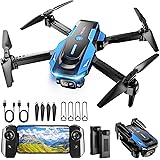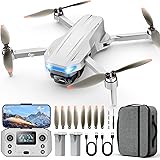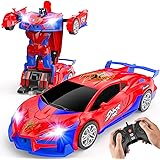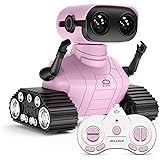Every hobbyist knows the feeling: the thrill of a new project, the meticulous assembly, the hopeful first flight. Then, sometimes, the quiet realization that a beloved creation, despite all its promise, just isn’t quite right. Watching the video above, Paweł’s farewell to his 3D printed tricopter resonates deeply with anyone who’s invested time and passion into a build that ultimately didn’t meet expectations. It’s a bittersweet moment, dismantling something you’ve poured effort into, but often, it’s a necessary step for growth and future innovation.
The story of Paweł’s 3D printed tricopter is a common one in the world of DIY drones. He describes how it sat unused for over a year, essentially becoming a placeholder for parts. This isn’t a story of failure, but rather a practical lesson in design limitations, component choices, and understanding the specific demands of different flying platforms. Let’s delve deeper into why tricopters often present unique challenges and what we can learn from Paweł’s experience.
1. The Peculiar Challenges of Tricopter Design and Flight
Tricopters occupy a fascinating niche in the drone world, offering a distinct aesthetic and a mechanical complexity that sets them apart from their more common quadcopter cousins. However, this uniqueness also brings specific engineering hurdles, particularly concerning flight stability and durability.
1.1 Mechanical Yaw Control: A Double-Edged Sword
Unlike quadcopters, which achieve yaw (rotation around the vertical axis) by varying the speeds of opposing motors, tricopters rely on a single servo motor to tilt their rear propeller. This mechanical solution is elegant in theory, much like a boat’s rudder, but introduces a critical vulnerability. The video highlights this perfectly, noting that “almost every crash that, almost, in any way involves hitting the tail motor usually means the servo gears inside are broken.” It’s an inconvenient truth: a simple bump can often translate into a repair job.
This reliance on a servo motor for yaw means that the precision and durability of this single component are paramount. If the servo has even a slight amount of slop or “loose play” on its shaft, as Paweł experienced, the yaw control becomes imprecise. Imagine trying to steer a racing car with a loose steering wheel – accuracy goes out the window. This inherent mechanical fragility makes tricopters less suited for aggressive flying styles like FPV acro or racing, where crashes are not just possibilities but often inevitable rites of passage.
1.2 The Intricacies of Flight Tuning: Battling Yaw Authority and Vibrations
Paweł’s frustration with his tricopter’s flight characteristics — the “flies like shit” sentiment — speaks volumes about the challenges of tuning these unique machines. He describes a dilemma: either the yaw authority is compromised, leaving the tail “all over the place,” or increasing P gains to achieve solidity leads to excessive vibrations. This is a classic example of a tuning paradox where solving one problem exacerbates another.
In simple terms, P (Proportional) gain in PID tuning dictates how aggressively the flight controller corrects for errors. For a tricopter, achieving crisp, stable yaw often requires higher P gains to overcome the mechanical latency and slop in the servo system. However, pushing these gains too high can amplify any existing mechanical vibrations, creating an undesirable wobble or oscillation. It’s a delicate balancing act, akin to trying to smooth out a bumpy road by stiffening a car’s suspension; while it might reduce some sway, it also makes you feel every crack in the pavement.
This balancing act is less pronounced in quadcopters, where electronic differential thrust offers quicker, more precise, and inherently more robust yaw control without the mechanical vulnerability of a single tail servo. The quest for “better components, more stable servos, more expensive servos, with faster protocol” for a tricopter underscores the effort often required just to achieve acceptable performance, which can quickly diminish the “cheap” aspect of a 3D printed frame.
2. 3D Printing Your Drone Frame: Accessibility, Durability, and Design
The appeal of a 3D printed tricopter frame is undeniable. It combines the accessibility of personal manufacturing with the thrill of DIY electronics, allowing enthusiasts to bring custom designs to life. Paweł’s frame, available on Thingiverse, exemplifies the open-source spirit that thrives in the FPV community.
2.1 PLA Plastic: The Entry Point to Custom Drone Frames
Paweł mentions his frame was printed with PLA plastic. PLA (Polylactic Acid) is a popular choice for hobbyist 3D printing due to its ease of use, biodegradability, and relatively low cost. For drone frames, especially for a 3D printed tricopter, PLA offers a quick way to prototype and test designs without significant material expense. It allows for rapid iteration, meaning designers can print a part, test it, identify flaws, and print a revised version in a relatively short timeframe.
However, PLA also has its limitations, particularly in terms of durability. While stiff, it can be brittle under impact, which is a significant concern for anything intended for flight, especially in a hobby known for spectacular crashes. More robust materials like PETG (Polyethylene Terephthalate Glycol) or even carbon fiber-reinforced nylon are often preferred for their improved impact resistance and flexibility, but they typically come with higher costs and more challenging printing requirements.
2.2 Designing for Durability and Performance
Creating a functional 3D printed tricopter frame goes beyond simply modeling the shape. Designers must consider stress points, material properties, and the forces exerted during flight and impact. Features like thicker walls in critical areas, strategic infill patterns, and clever structural reinforcements can significantly enhance a frame’s resilience. The open-source nature of platforms like Thingiverse allows for community-driven improvements, where designers can share insights and evolve designs collaboratively.
For a tricopter, the tail mechanism is often the most scrutinized component. A well-designed 3D printed tail might incorporate a breakaway section or sacrificial parts that absorb impact energy, protecting the more expensive servo. However, adding such features also adds complexity, weight, and potentially, more points of failure. It’s a constant battle between strength, weight, and practicality.
3. Learning, Adapting, and the Evolution of a Hobbyist
The journey with the 3D printed tricopter, from hopeful build to eventual disassembly, is a microcosm of the entire FPV hobby experience. It’s filled with learning curves, problem-solving, and the inevitable realization that sometimes, the best path forward is a new one.
3.1 Embracing Experimentation and Learning from Limitations
Paweł’s tricopter project, despite its ultimate fate, was a “very cool project” from which he “learned a lot about the design, 3D printed design.” This highlights a crucial aspect of any technical hobby: the value of experimentation. Even projects that don’t become long-term favorites contribute significantly to a builder’s knowledge base. Understanding why a design doesn’t work, or what its inherent limitations are, is often more valuable than simply following a successful blueprint.
His experience taught him about the specific vulnerabilities of tricopters, the nuances of servo quality, and the challenges of PID tuning on mechanically complex platforms. These are lessons that will undoubtedly inform his future builds, whether they are quadcopters or airplanes. It’s like a chef experimenting with a new recipe that doesn’t quite work out; they still learn about ingredient interactions and cooking techniques, which they can then apply to their next culinary creation.
3.2 The Art of Salvage and Strategic Pivoting
The decision to “put apart, into pieces” the tricopter and reuse components is a hallmark of an experienced hobbyist. Motors, electronic speed controllers (ESCs), flight controllers, and receivers are often the most expensive parts of a build and can easily be repurposed for new projects. This strategy maximizes the return on investment and minimizes waste, turning an underperforming drone into a donor for future, more promising endeavors.
Paweł’s choice to “sticking with airplanes and quads” isn’t a retreat but a strategic pivot. It’s an acknowledgment of what works best for his flying style and preferences. Sometimes, the most efficient and enjoyable path is to focus on platforms that inherently offer better performance, durability, or ease of tuning for your specific needs. The 3D printed tricopter served its purpose as a learning tool, and now its components will live on, powering new adventures.











